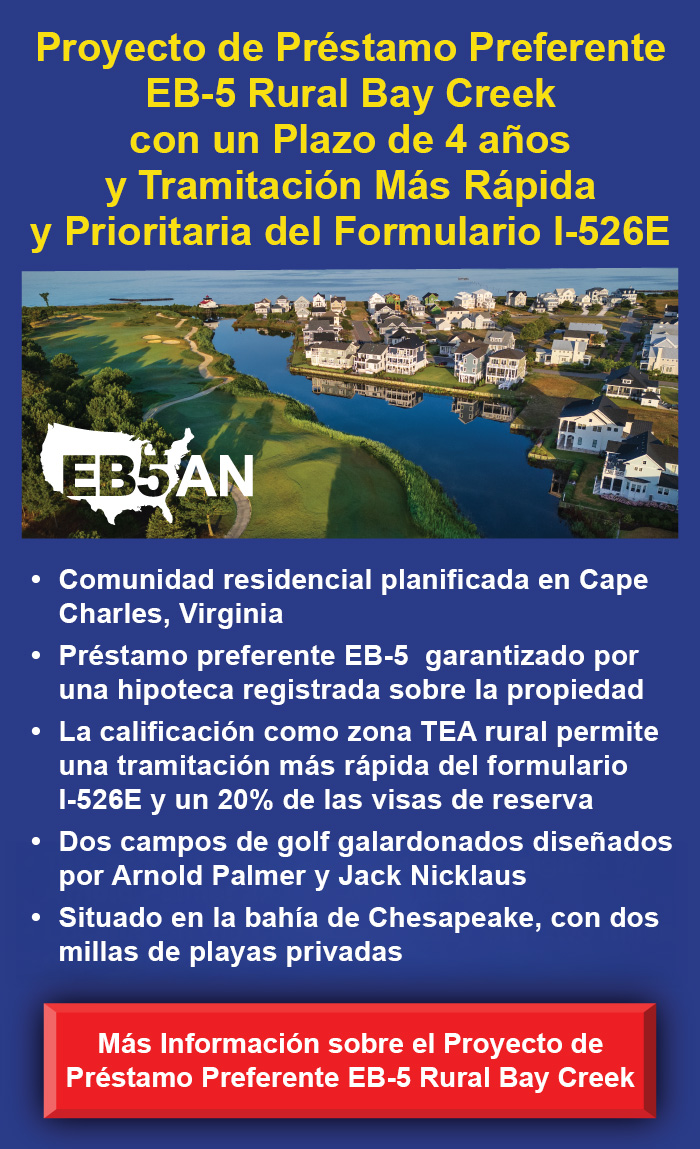The EB-5 investment program has seen an influx of H1-B visa candidates in recent years as a faster alternative to a permanent life in the United States. This was due in part to visa retrogression for petitioners from India and other countries. But the Department of State’s release of the October 2020 Visa Bulletin has some such investors questioning whether EB-5 is still the right path.
Understanding Visa Bulletins
The Department of State (DOS) publishes two different cutoff dates in their Visa Bulletins: Final Action Dates (Chart A) and Dates for Filing (Chart B). The DOS refers to both of these when processing immigrant visas, including those visa applications submitted from the EB-5 investment program.
If a petitioner’s priority date under Chart B is listed as current, they and their family members are allowed to file their I-485 petition for adjustment of status, along with Forms I-765 and I-131, to apply for an adjustment to their residency status. Once these forms are filed, United States Citizenship and Immigration Services (USCIS) can issue applicants and their family members authorization cards allowing for advance parole (AP) for travel within 90 days, as well as an unrestricted employment authorization document (EAD) for work.
Leaps Forward in Chart B: What it Really Means
The October 2020 Visa Bulletin showed a large jump in Dates for Filing (Chart B) for the EB-2 and EB-3 visa categories. EB-2’s Chart B dates advanced 21 months, from August 2009 to May 2011. The Chart B dates for EB-3 moved even further, from February 2010 to January 2015, a full 59 months forward.
Since 2015, USCIS has rarely used Chart B. But the release of the October 2020 Visa Bulletin means USCIS is now accepting I-485 petitions, a welcome change for all in the EB-5 investment community. Previously, EB-2 and EB-3 applicants have only had the option of extending their H1-B visas another term. With USCIS now allowing I-485 filings, EB-2 and EB-3 applicants will now be able to change employers within 180 days of approval, as long as their new occupation is in a similar field.
This is extraordinary news. But it does not mean visa wait times are over. For visa applicants already living in the United States wishing to adjust their residency status, Chart B is only available if there are more available visas than applicants in a given fiscal year, per USCIS guidelines. Yet the new fiscal year only started on October 1, 2020.
Furthermore, this year’s unprecedented pandemic resulted in the closures of U.S. consulates and delays in USCIS processing. These contributing factors suggest that the Chart B data may be temporarily skewed, and that the leap forward in dates may in fact lead again to visa retrogression in the coming years, a natural correction as we return to normal pre-pandemic rates of processing.
Scant Improvements in Chart A
While the Chart B dates for EB-2 and EB-3 applicants did indeed make a significant leap forward, their Final Action Dates (Chart A) did not. Chart A dates for both EB-2 and EB-3 categories advanced by only a few months.
USCIS will only adjudicate a petitioner’s I-485 form and determine if they are eligible for permanent residency in the United States, when the petitioner’s Chart A Final Action Date is listed as current. This means that although Chart B in the October 2020 Visa Bulletin allows I-485 petitions to be filed, petitioners’ applications will then be placed in a queue until their priority dates in Chart A are listed as current. This queue may last for many years, especially with the new discrepancy in dates between Charts A and B.
Children and the Chart A Backlog
Long waits can create problems if an applicant has a child. USCIS only uses Chart A to determine a child’s age, and the child must still be under 21 years of age when USCIS determines their green card eligibility. Child applicants may temporarily “freeze” their age when they file their I-140 petition, thanks to the Child Status Protection Act (CSPA). However, the child’s “age clock” begins to run again once the I-140 petition is actually approved.
So, despite the improvements in Chart B for EB-2 and EB-3 visa petitioners, the massive delays in Chart A mean petitioners with children still run a significant and dangerous risk of their child aging out of eligibility for a green card and being able to live in the United States.
The Coming Flood of Applications
The acceptance of I-485 applications began October 1st. But USCIS announced increased fees for many petitions and applications to be implemented by the end of October 2020. Form I-765 requires an additional fee of $490, while Form I-131 requires an additional fee of $585. These large increases led thousands and thousands to submit applications at the beginning of the month to avoid the increase in fees. The sheer volume of these applications may very well overwhelm processing capacity. With the Chart B dates for EB-3 advancing a full three years further than those of EB-2, many Indian nationals are also considering downgrading from EB-2 to EB-3 status.
However, this discrepancy is likely to result in a veritable flood of applications, which will only create an even larger backlog in EB-3’s Chart A dates. And with fewer EB-2 applicants, EB-2 dates may soon very likely leap ahead of EB-3, leaving applicants who switched in a worse state than before.
Furthermore, any applicant who downgrades to a different visa must submit yet another I-140 petition. If that applicant has children, they run an even larger risk of their child aging out, with their child’s age now freezing at an even later date.
The Safest Way? Continue with EB-5 Investment
Despite the seemingly attractive data in the October 2020 Visa Bulletin, an EB5 investment is still the surest and fastest way to achieve permanent residency in the United States. With the fee increases, the flood of EB-2 applicants downgrading, and the increasing delays in Final Action Dates, EB-5 will still be faster than either EB-2 or EB-3 for Indian nationals whose priority dates are not close to 2009 or 2010.
Rerouting to EB-2 or EB-3 will still take many years before an applicant receives a green card. The EB-5 investment journey is still the fastest option. Applicants considering a change should seek legal counsel with experience in U.S. immigration in order to make sure whichever decision they make is right for them and their family.


